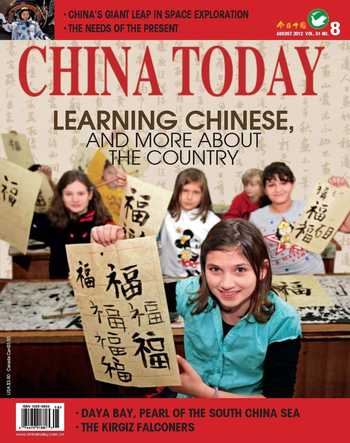Culture Has No Boundaries
Last June saw the successful completion of activities under the French Language Year in China and the Year of Australian Culture in China. These initiatives provided the peoples of China, Australia and France with more opportunities to understand and experience one anothers cultures. Many similar programs designed to deepen cultural understanding between China and the world have been held in China over the past years.
According to statistics from the Bureau for External Cultural Relations of the Ministry of Culture, China has signed inter-governmental cultural cooperation agreements with 145 countries and has agreements on around 800 separate plans for annual cultural exchanges. China maintains close relations with 1,000 or more nongovernmental cultural organizations around the world. There has been an unprecedented growth in the scale and scope of cultural exchanges between both governments and civil groups, the contents, forms and channels of which grow ever richer. Increasing numbers of Chinese people are developing an interest in other cultures and have started to travel abroad to see the world for themselves. Currently Chinese people make over 70 million visits to other countries every year.
The Chinese peoples enthusiasm for overseas study has been strong as ever in recent years. From 2008 to 2011, the number of Chinese studying abroad almost doubled, from 179,800 to 350,000. By the end of 2010 there were more than 1.3 million, making China the worlds largest source country of overseas students. Chinese students in the U.S. now number almost 160,000, and China has been the largest source country of foreign students in the U.S. for two consecutive years.
China also welcomes international students. In 2011, the number of foreign students in China exceeded 290,000, representing 194 countries and regions. They studied in 660 colleges and universities, scientifi c research institutes, and other educational institutions in the mainlands 31 provinces, autonomous regions and municipalities. Among them, students from South Korea, the U.S. and Japan amounted to 62,442, 23,292 and 17,961 respectively.
With university exchanges between China and other countries rising, learning languages is high on the agenda for most students. English is a required subject for Chinese students. About 240 million are learning English in elementary schools, middle schools and universities. Those learning Japanese and French stand at 700,000 and 100,000 respectively.
Meanwhile, more and more people around the world are learning Chinese. Their numbers exceeded 40 million in 2009. China established the fi rst of its Confucius Institutes – overseas centers for Chinese language and culture – in South Korea in 2004. To date, China has cooperated with over 100 countries to establish more than 350 Confucius Institutes and over 500 Confucius Classrooms. Every year China sends around 7,000 Chinese teachers and volunteers to different parts of the world to staff these establishments. With 80 centers and 300 classrooms, the U.S. boasts the largest number of Confucius Institutes of any country.
A few months ago Chinese instructors at certain Confucius Institutes were involved in visa disputes in the U.S. The growing presence of Confucius Institutes has provoked concern over Chinas cultural expansion in some countries, the visa issue being one indirect manifestation of misgivings. Xu Lin, director-general of Hanban (the Confucius Institute Headquarters), commented: “Although we have encountered diffi culties in some countries, we overcame them thanks to the support of local cooperative universities. Their enthusiasm for Confucius Institutes is beyond our anticipation.”
Culture should know no boundaries. “Seeking harmony, but not uniformity”represents the essence of Chinese culture. “All things are nourished together without harming one another. The courses of the seasons, and of the sun and the moon, fl ow peacefully, never colliding.” This quote, from the Confucian classic The Doctrine of the Mean (Zhongyong), reveals the poetic origins of the Chinese concept of harmonious development. For China, harmony is not just a key word domestically, but also guides its relations with the world.

